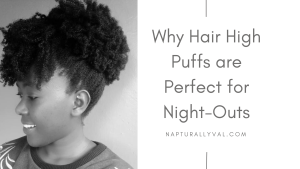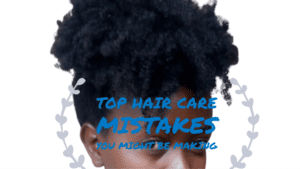Hey there, curlfriends! Let’s talk about something that’s been the bane of many natural hair enthusiasts: split ends. You know, those annoying little frayed ends that just seem to pop up no matter how much you care for your hair. If you’re like me, you’ve probably wondered why split ends happen and, most importantly, how to stop them. Split ends aren’t just a nuisance; they can lead to serious hair breakage if left unchecked. So, understanding what causes them is key to maintaining healthy, thriving natural hair.
In this blog post, we’re going to dive into the major causes of split ends, especially for those of us with natural hair, and how you can prevent and treat them. By the end, you’ll have all the knowledge you need to keep your ends intact and your curls popping!
Feel like your hair has been the same length forever, I’ve an Ebook that will help you grow your hair healthier, longer and thicker. Grab your copy here… Also, check out all the Ebooks,guides and journals that will go a long way in your hair care journey here.
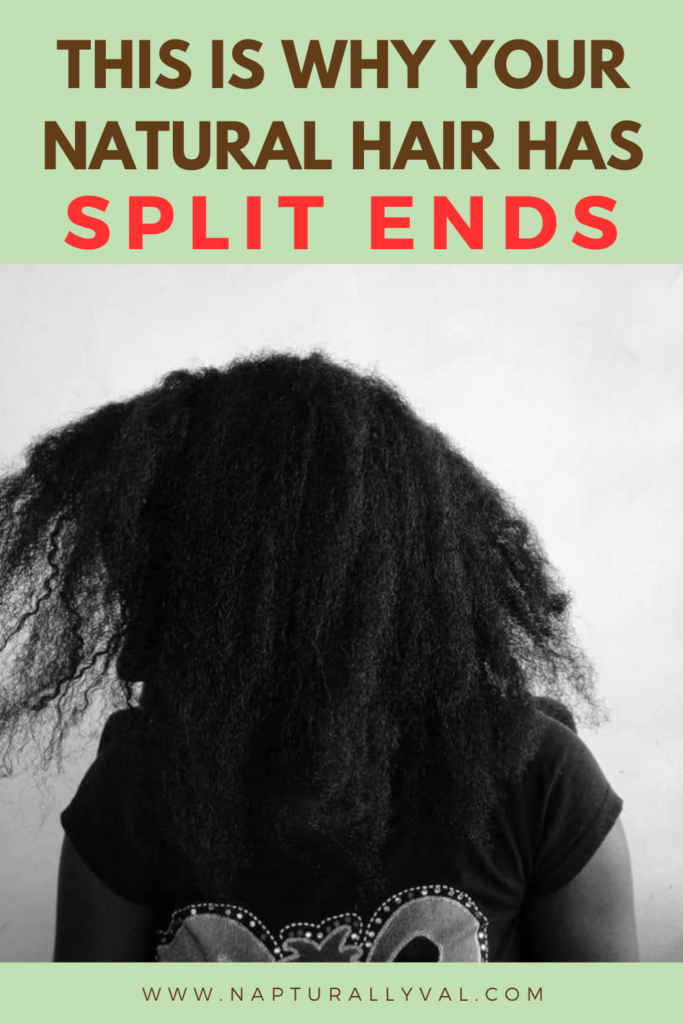
Table of Contents
From Heat Damage to Brushing Wrong: 8 Reasons for Split Ends
What Are Split Ends?
Before we dive into the causes, let’s quickly explain what split ends are. Split ends occur when the protective outer layer of the hair cuticle is damaged, causing the hair shaft to fray. The hair fiber splits into two or more sections at the tip, and in some cases, the split can travel up the hair shaft, leading to more extensive breakage.
There are several types of split ends:
- Basic Split Ends: This is the typical “Y” shaped split.
- Multiple Splits: This occurs when the hair shaft splits into several branches.
- Tapered Splits: The end becomes thin and weak without fully splitting.
Now that we know what split ends are, let’s talk about the common causes.

Major Causes of Split Ends
1. Lack of Moisture
One of the most significant contributors to split ends is a lack of moisture. Natural hair, particularly 4C hair, tends to be drier because the tight curl pattern makes it harder for natural oils (sebum) to travel down the hair shaft. Dry hair is more prone to becoming brittle and breaking off, leading to split ends.
Solution:
Keep your hair hydrated by incorporating a moisturizing routine. Use products that are rich in water and humectants like glycerin, honey, or aloe vera. Be sure to follow the LOC method (Liquid, Oil, Cream) to lock in moisture. A great product for moisture is the Mielle Organics Pomegranate & Honey Leave-In Conditioner or SheaMoisture Curl Enhancing Smoothie for 4C hair.
2. Heat Damage
We all love the occasional blowout or silk press, but overusing heat tools like flat irons, curling wands, and blow dryers can lead to heat damage. When exposed to excessive heat, the hair’s natural moisture is stripped away, weakening the hair shaft and making it more susceptible to splits.
Solution:
Limit your use of heat tools, and always use a heat protectant when you do apply heat. A good one to try is the TRESemmé Thermal Creations Heat Tamer Spray. When blow-drying, use the cool setting to minimize heat exposure. You can also opt for heatless styling methods like twist-outs or Bantu knots to give your hair a break from the heat.
3. Rough Handling
Sometimes, our hair-care routine itself can be the culprit behind split ends. Rough detangling, frequent manipulation, and even aggressive towel drying can all cause mechanical damage, leading to split ends.
Solution:
Be gentle with your hair, especially when it’s wet, as that’s when it’s most vulnerable. Use a wide-tooth comb or your fingers to detangle your hair. Always start detangling from the ends and work your way up to the roots. When drying your hair, opt for a microfiber towel or a cotton t-shirt to prevent friction and breakage.
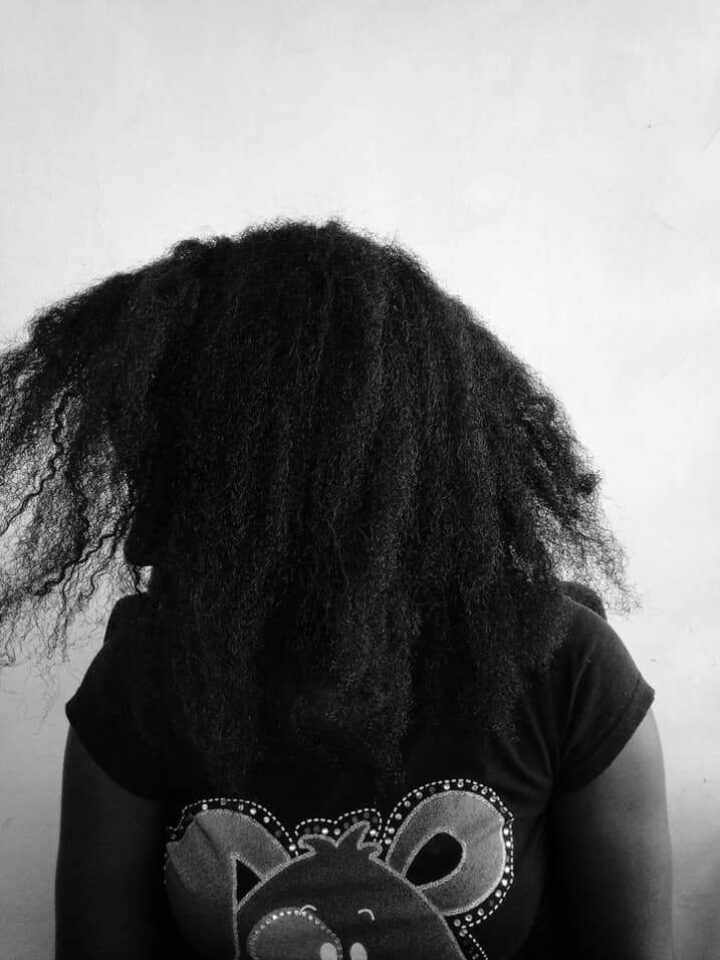
4. Chemical Damage
Chemicals like relaxers, texturizers, and dyes can cause severe damage to your hair if not used carefully. These treatments alter the structure of your hair, weakening the bonds that hold the hair shaft together. Over time, this can lead to split ends and breakage.
Solution:
If you choose to chemically treat your hair, be sure to have a deep-conditioning routine in place. Use protein treatments to strengthen your hair, such as the Aphogee Two-Step Protein Treatment. Also, make sure to minimize chemical treatments and space them out as much as possible.
5. Over-Manipulation
The more you style your hair, the more you risk damaging it. Constantly changing your hairstyles, whether it’s switching between protective styles, manipulating your curls, or frequently pulling your hair into tight ponytails or buns, can weaken the ends and cause splitting.
Solution:
Give your hair a break with low-manipulation styles like twist-outs, braid-outs, or wash-and-go styles. Protective styles like braids, twists, or wigs can also help preserve your ends, but make sure they’re not installed too tightly, and always moisturize your hair underneath.
6. Environmental Damage
Our hair is exposed to environmental stressors daily. Sun exposure, pollution, wind, and even cold weather can strip moisture from your hair and lead to dryness and split ends. The UV rays from the sun can be particularly harsh on natural hair, causing it to weaken and split over time.
Solution:
Protect your hair from the elements by wearing a hat, scarf, or satin-lined cap when you’re out and about, especially in extreme weather conditions.

It may seem counterproductive, but skipping trims is a sure way to accumulate split ends. Holding on to dead, damaged ends only leads to more breakage and prevents you from retaining length. Once the ends begin to split, the damage can travel up the hair shaft, making things worse.
Solution:
Get regular trims to remove split ends before they can do more damage. You don’t need to cut off inches; a small trim every 4-6 months can make a world of difference. If you notice split ends in between salon visits, try dusting—this involves trimming just the very tips of your hair at home to keep things neat.
8. Using the Wrong Hair Tools
Believe it or not, the tools you use to style your hair can play a major role in causing split ends. Combs and brushes with harsh, sharp bristles can tear through your hair and cause unnecessary friction. Even wearing hair elastics with metal parts can contribute to splitting.
Solution:
Opt for seamless combs, soft-bristle brushes, and hair accessories that are gentle on your hair. If you’re using elastic bands, make sure they’re snag-free and don’t have any metal components that could damage your ends.
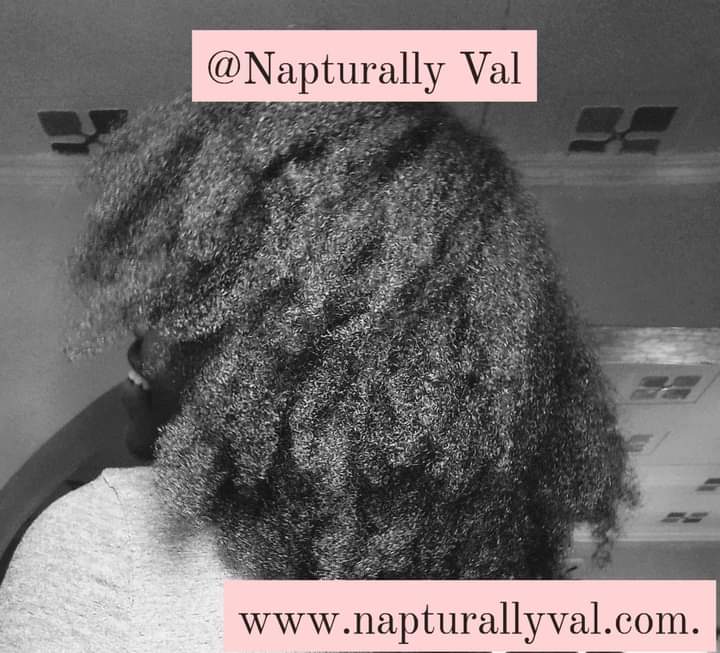
Preventing Split Ends: Tips for Healthy Natural Hair
Preventing split ends comes down to how well you take care of your hair on a daily basis. Here are a few additional tips to help you keep your natural hair healthy and minimize split ends:
- Seal Your Ends: After moisturizing, always seal your ends with a natural oil like castor oil or jojoba oil. These oils act as a protective barrier to lock in moisture and shield your ends from damage.
- Deep Condition Regularly: Use a deep conditioner at least once a week to keep your hair hydrated and strong. Products like the TGIN Honey Miracle Hair Mask or Camille Rose Algae Renew Deep Conditioner are excellent for 4C hair.
- Protect Your Hair at Night: Sleep with a satin or silk bonnet, or use a satin pillowcase to prevent friction that can lead to split ends.
Split ends are a common issue for anyone with natural hair, but with the right care, you can minimize and prevent them. By moisturizing regularly, being gentle with your hair, and protecting your ends, you’ll be well on your way to healthier, longer natural hair. Remember, it’s all about treating your hair with the love and care it deserves.
Have you experienced split ends? What’s your go-to method for preventing or treating them? Let’s chat about it in the comments below!
Stay blessed, stay moisturized, and stay split-end free!

